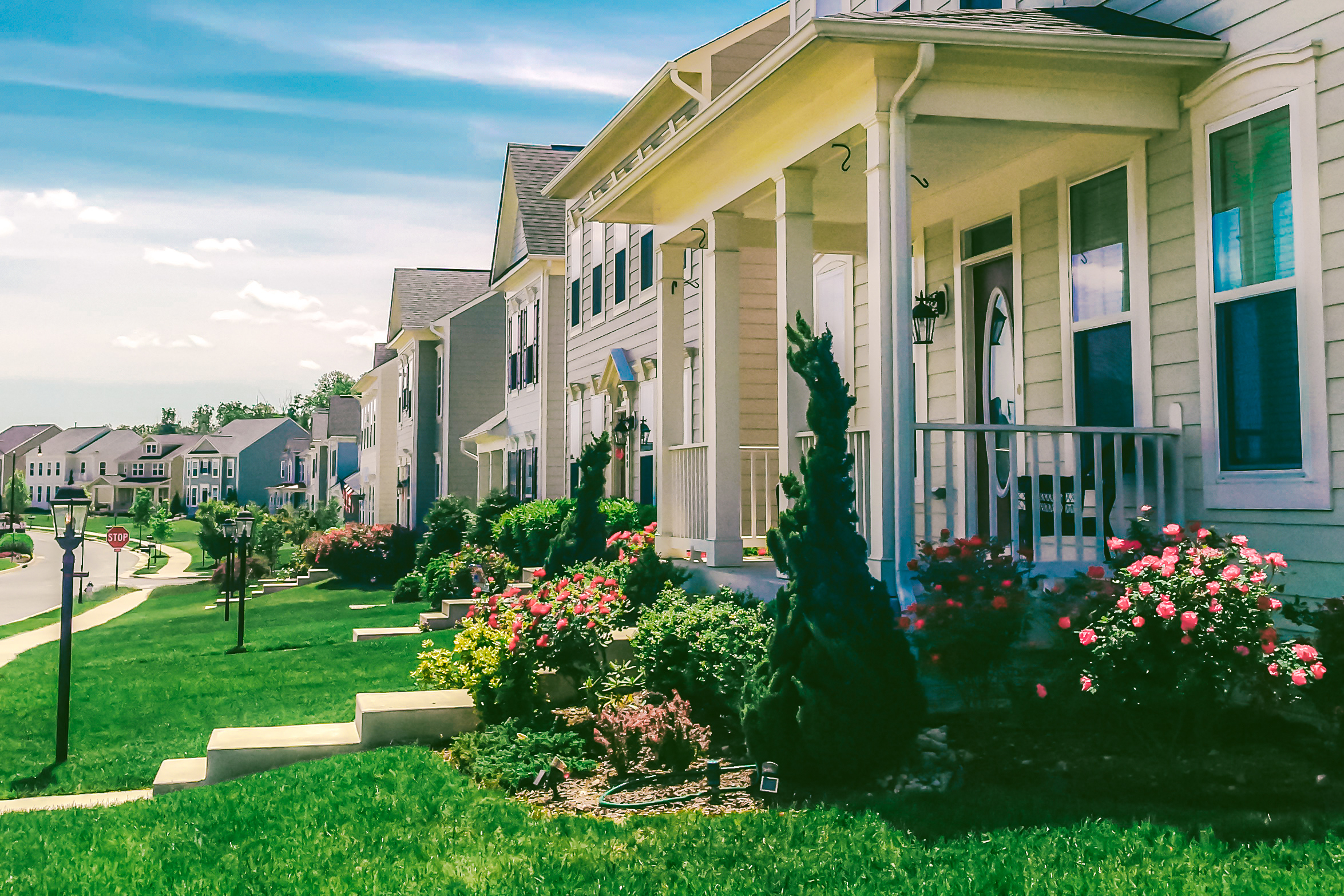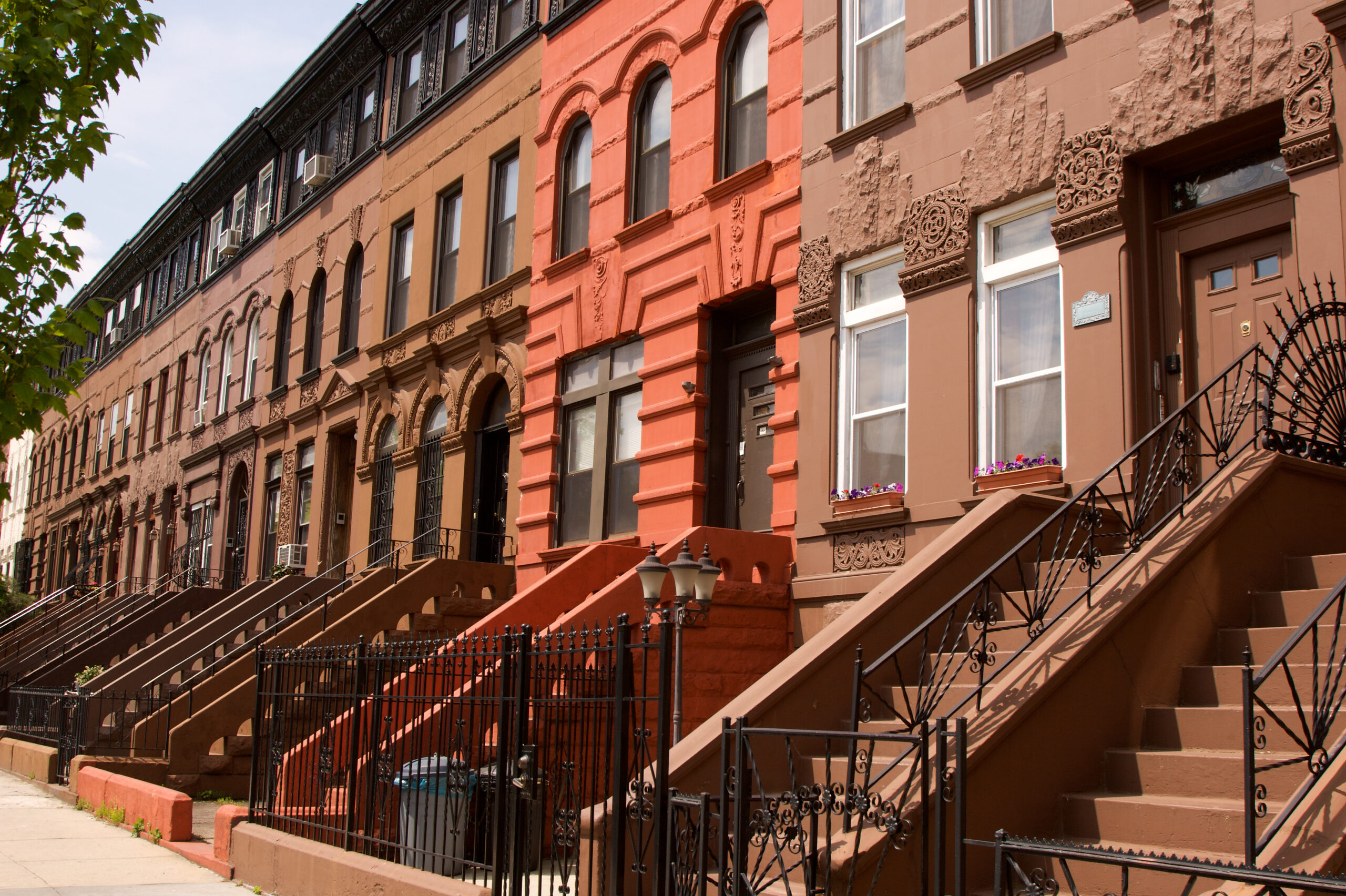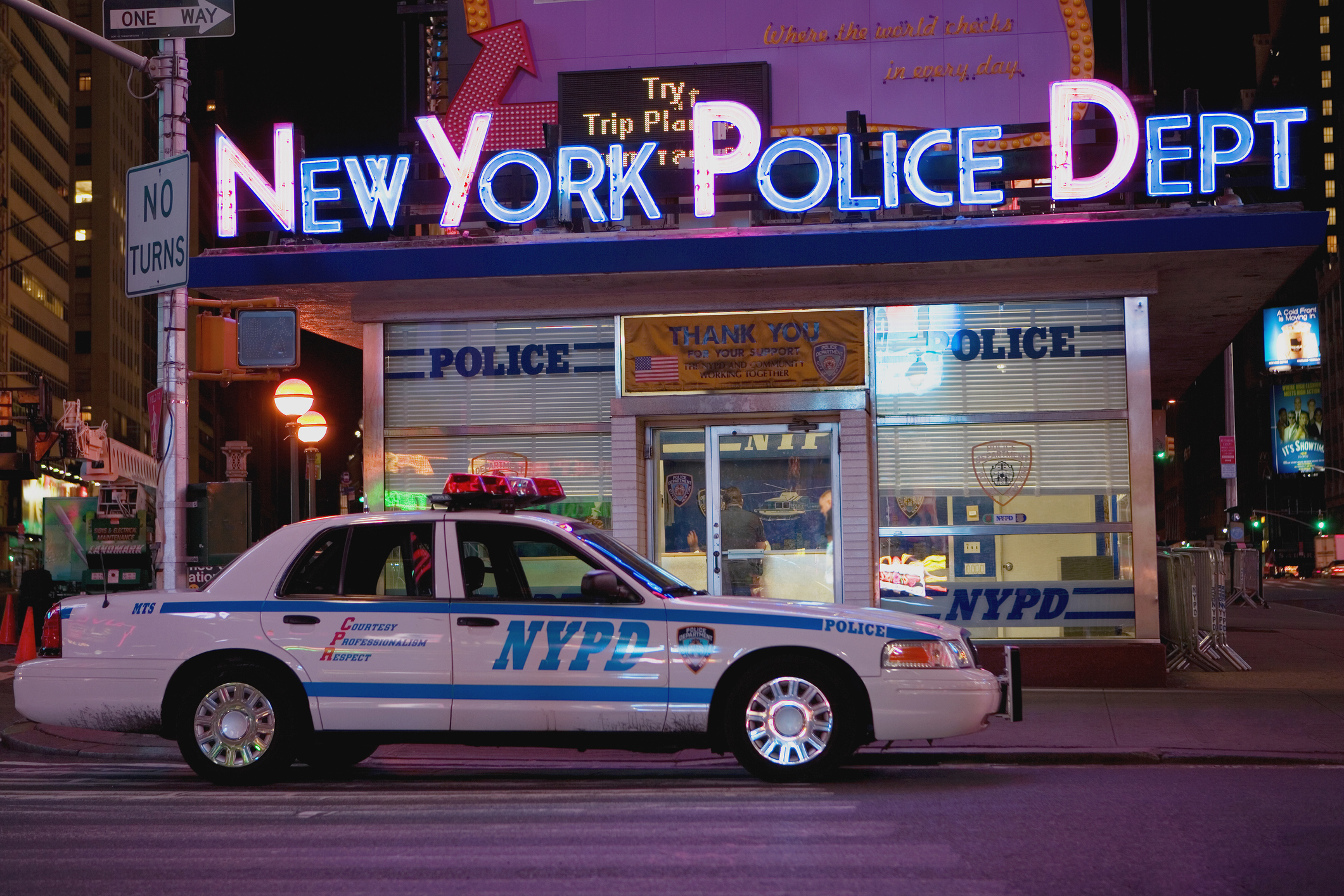After the midterm election, the city and state need to address voters’ bread-and-butter concerns.
Ex-Urbia

The post-urban future of cities.
This feature on the future of American cities was occasioned by the release of the new documentary, Gotham: The Fall and Rise of New York.
“Town and country must be married and out of this joyous union will spring a new hope, a new life, a new civilization.”
— Ebenezer Howard, 1898
All cities must evolve over time. Those that fail to do so end up, at best, like Venice, Vienna, or Florence: lifestyle and tourist hubs. This fate now awaits our greatest urban cores if they cannot address the demographic, social, and economic forces transforming the metropolitan landscape.
Urbanism is not dead, but it is morphing into a new form. The most promising cities are currently taking shape on the periphery of the most densely settled areas, which lets them accommodate companies and families in a safer, healthier environment. These new cities are found around economically and demographically dynamic regions, largely in the sunbelt, but also in parts of the Midwest such as around Columbus and Indianapolis.
This is, increasingly, where the action is. Nearly all the country’s fastest-growing counties are on the urban fringe. By 2025, note the consultants at Bain, exurbs will have more people than the inner cities they surround. Peripheral regions have been the big winners in what Zillow calls “the great re-shuffling,” essentially an acceleration of the trend toward suburbs, smaller cities, and even rural areas. In 2020, exurbs enjoyed a 37% growth in migration and price increases twice the national average. The most impressive performance was that of planned communities, whose growth has outpaced other suburban forms.
The New Geographic Order
This peripheral growth well predates the pandemic. In 1950, the core cities accounted for nearly 24% of the U.S. population; today the share is under 15%. In contrast, the suburbs and exurbs grew from housing 13% of the metropolitan population in 1940 to 86% in 2017—a gradual increase of 2% per year. Despite all the talk of moving “back to the city,” commonplace for at least a generation, suburbs have accounted for about 90% of all U.S. metropolitan growth since 2010.
Just as significantly, the suburbs and exurbs—once dismissed largely as “bedrooms” for core cities—now dominate job growth. From 2010 to 2017, over 80% of all job growth was in the suburbs and exurbs. The 50 highest-growth counties had an employment increase of more than 2.5 times that of other counties in 2019.
The pandemic clearly accelerated these trends, in part because of generally high morbidity rates in areas with the highest urban densities. Despite severe lockdowns, places with 10,000 or more people per square mile suffered upward of two times the number of overall adjusted COVID fatalities. Fatalities were generally lower in car-dominated places where people can afford space—the most important key to reducing “exposure density.”
The lockdowns also accelerated an already serious surge in crime, including a jump in homicides. Many of the country’s great urban centers—Los Angeles, New York, Portland, San Francisco, and Seattle—have become centers for homelessness, open drug markets, and incubators for all sorts of diseases, some of them distinctly medieval and arguably far more dangerous than coronavirus. These conditions have also eroded transit systems that once were heralded as the big city’s great advantage.
But arguably the biggest game-changer has been the rise of online work. Stanford economist Nicholas Bloom suggests that remote workers will constitute at least 20% of the workforce—more than three times the pre-pandemic share. A study from the University of Chicago suggests that online work covers as much as one third of the workforce and as much as 50% in Silicon Valley.
As a result, it is widely expected that office rents in Central Business Districts (CBDs) will not recover for at least five years. A recent survey by Site Selectors guild suggests that only 10% of companies are looking to expand in large cities, one-sixth as many choose suburbs, and one-third of those favor rural areas. The rise of online work, notes a recent Kansas City Fed report, suggests that the fringes will also see continued growth in population.
The New Model
Since the 1950s, many traditional roles of the city—as a work center, as a hotspot of diversity, as a cultural bellwether—have been assumed in large measure by other types of communities. This trend is most obvious in planned communities in places like the Woodlands in Texas, Irvine in California, and New Albany in Ohio. These are inheritors not of mass-produced, economically dependent places like Levittown but of the “garden city” extolled by urban planner Ebenezer Howard. It is a model that gained support among a wide range of luminaries from a variety of backgrounds, from H.G. Wells and Thomas Carlyle to Friedrich Engels.
During the New Deal, America’s government experimented with building Garden Cities or “Greenbelt Towns.” Three such towns were founded: Greenbelt, Maryland, Greenhills, Ohio, and Greendale, Wisconsin. They were intended to be bucolic planned communities. In 1949, the federal government sold these parcels, which have become largely successful suburban developments.
But for the most part it was the private sector that developed suburbia, aided by generous tax policies and other federal concessions. In the suburbs, developments such as Lakewood in southern California, and Levittowns in Pennsylvania and Long Island, supplied housing—lots of it, and relatively cheap. Developments also furnished workers to surrounding plants and downtowns. Like today’s new cities, they employed new techniques, some taken from the experience of the military in World War II, to industrialize and rationalize production.
By the 1960s, numerous communities reflecting the Garden City ideal—Reston, Columbia, Irvine, Valencia—were well on their way to becoming economic, cultural, and retail centers in their own right. These emerging communities have been dubbed by Los Angeles planner Wally Siembab as “smart sprawl,” a way to reduce long-distance commuting and create a family-friendly environment.
Critically, growth in these new communities is being driven by shifts among the three growing demographic groups: immigrants, seniors, and millennials. All three are now expanding far faster in the exurbs, even more than other suburbs. Most promising, these are areas where millennials, who already favored suburbs before the pandemic, tend to gravitate.
Now entering their family formation years, two thirds of millennials have favored suburbs as their preferred residence before the pandemic. Basic factors such as less crime, generally lower housing prices, and better schools made them more attractive than urban cores. The fastest-growing counties were home to the most planned communities, and they gained mightily from two groups: those earning over $75,000 per year and, especially, those between the ages of 30 and 44. From 2015 to 2019, the rate of demographic increase in the 25-34 age range was almost four times as high as the national average.
Once work started moving online, these communities appealed to millennials even more strongly. According to a Conference Board survey, their major draw was enhanced “life-work balance.” This is particularly true for young families: the highest-growth counties have far more school-age children (ages 5 to 14) per household than the nation (0.66 compared to 0.43 for other countries). The highest-growth counties have 3.5 times as many school-age children per household as places like Manhattan and San Francisco.
These same benefits of exurban living also appeal to minorities. Over the past decade, some 96% of all suburban growth was among racial minorities. In the 50 largest U.S. metro areas, 44% of residents live in racially and ethnically diverse suburbs where non-whites make up between 20% and 60% of the population. Hispanic and other immigrant families tend to seek out such places, just as primarily Anglo buyers did during the Levittown era.
“It’s back to the past, like I was a child—you can run around and play in the streets,” says Michelle Cordero, a leading real estate salesperson in the burgeoning Denver exurbs, where median prices now approach $600,000. “Lots of people work at home, which makes this kind of place more attractive. People want to go back to a world where people get together for barbecues in the backyard.”
Building New Sustainable Communities
These communities appeal because they actually feel like communities. Contrary to the dystopian portrayal common in the media and in pop art, suburbanites have generally enjoyed a stronger sense of community than their urban counterparts. This pattern was shown in a 2006 study and confirmed more recently by Pew. Developers have striven to promote community-building in their designs, as evidenced by such features as clubhouses, Main Streets, and cultural amenities.
This made developments particularly good places to endure the pandemic. In 2019, Natalie Clark moved from Houston to Elyson, a new expansive project along the city’s periphery, along with her husband, two kids aged six and 11, three dogs, and two bunnies. “This is what we wanted, and it turned out to be the greatest pandemic community,” she said over coffee with friends, overlooking the development’s lake, built on former rice field drainage. “We felt safer here. Having space made us good neighbors. On my street most people worked from home.”
People at Elyson are attracted, particularly in light of the pandemic, by its 30 miles of trails and over 750 acres of open space. This sort of emphasis on outdoor breathing room is common in many new planned communities. “There’s an urgent need emerging in science and at the gut level to increase the nature experience. This field is just exploding,” says Gretchen Daily, a professor of environmental science at Stanford University.
Changes in technology—notably the development of new materials and more sophisticated systems for controlling energy and water use—could make these new communities more ecologically advantageous as well. MIT’s Alan Berger shows how well-planned new developments could reduce greenhouse gases by using rooftop solar, electric cars, and eventually autonomous taxis. With ample open space, these areas are ideal habitats for thriving populations of insects, birds, and mammals.
There is also growing skepticism about the environmental advantages of dense, high-rise cities, in terms of their impact on GHG. Even green advocates know the benefits of forced densification are not impressive. According to projections from the pro-density Terner Center at U.C. Berkley, California’s draconian forced-urbanization policies—adding three million homes in dense urban areas—might reap a 1% decrease in state emissions over “business as usual.”
The Political Conundrum
Despite the appeal of these communities, developers and potential buyers increasingly face mounting pressure from urban planners and radical environmentalists. Some want all suburban expansion curtailed for the sake of climate. Others on the Right, largely libertarians, reject suburban housing out of their fealty to the demands of the market and capital. They have been critical, if not exactly witting, allies to those who seek to force densification.
The public’s attitude toward new city growth may determine which states and regions prosper in the future. California progressives, some developers, and their media boosters would see single family suburban owners replaced by urban apartment renters. Not surprisingly, California, home to some of the most successful planned communities in the past, ranked low in 2020 for numbers of growing new communities, three-quarters of which are in less regulated states like Texas, Florida and Nevada.
The future for new cities is particularly bright in Texas, where liberal land regulation allows developers in county lands to develop their own water, sewage, roads, and other infrastructure. Texas has more than 900 Municipal Utility Districts (MUDs), averaging about 1,000 acres each. About two-thirds of those are in the Houston metro area. These laws have allowed for the construction of new communities not only in the sprawling Dallas and Houston areas but also more remote communities like Los Lagos in the border city of McAllen. Elon Musk is even contemplating building his own new city outside Austin, close to his Space X, Boring Company, and Tesla operations.
Similar approaches have been used as well in Colorado, helping to reduce costs and delays in building new communities. To some, these communities represent miserable suburban “sprawl,” with leapfrogging development that swallows rural lands and leaves inner city communities behind. Yet these communities continue to develop and have little trouble finding customers, with new, massive projects being announced recently in the area.
Core cities of course could help stem the outward tide—but only by becoming like successful suburbs: safer, cleaner and more business-friendly. For the most part, the urban future belongs to the sunbelt cities, the exurbs, and even increasingly smaller cities and towns. These won’t be as dense and jostling as fans of the traditional city may prefer—but then, the denizens of Venice in 1100 would find industrial-age Manchester hard to comprehend or even recognize. Urban history is, if anything, protean. The city as a concept can survive changes of forms. As Frank Lloyd Wright suggested: “After all is said and done, he—the citizen—is really the city. The city is going wherever he goes.”
The American Mind presents a range of perspectives. Views are writers’ own and do not necessarily represent those of The Claremont Institute.
The American Mind is a publication of the Claremont Institute, a non-profit 501(c)(3) organization, dedicated to restoring the principles of the American Founding to their rightful, preeminent authority in our national life. Interested in supporting our work? Gifts to the Claremont Institute are tax-deductible.
What becomes of cities when the yuppies flee?
It pays to remember how quickly the winds of governance can change.
America’s urban future hangs in the balance.
An interview with Matthew Taylor, writer and director of a new documentary about the quintessential American city.





